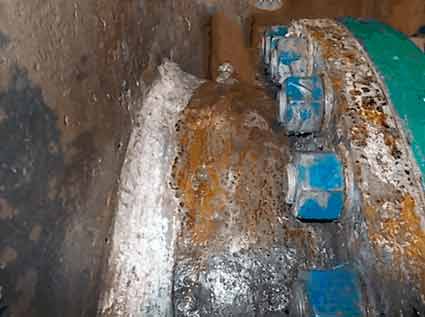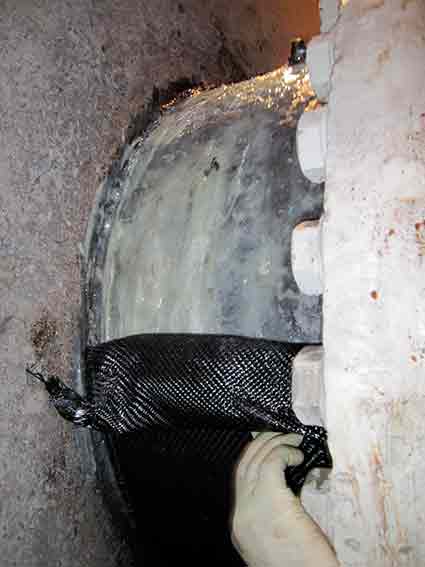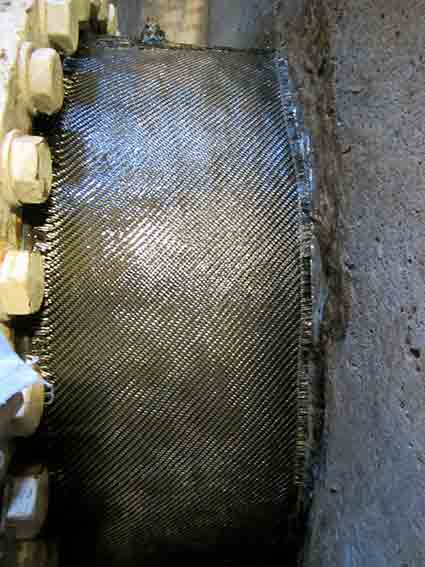†Preserving Potable Water: A Case of Steel Pipe Repair in a Service Reservoir Water is one of the most vital resources for life, and in the United States, thousands of water treatment plants work tirelessly to ensure clean drinking water reaches every home. After treatment, the water flows through an intricate network of pipes and is stored in reservoirs. These facilities often include pumping stations that help move water between different locations and elevations. While many service reservoirs are visible as elevated towers in flat areas, underground reservoirs are more common in hilly or mountainous regions. Over time, the steel pipes and tanks inside these reservoirs face constant exposure to moisture, leading to corrosion. This can cause leaks, water loss, and even contamination of the potable water supply. In one case, a service reservoir in the southwestern U.S. faced urgent repair needs when three outlet pipes began showing signs of pitting and leakage. Approximately 5% of the piping had been affected by corrosion due to long-term exposure to water and oxygen. Some sections had deteriorated to the point where they were leaking from the edges of the concrete tank. The repair needed to meet strict safety standards—specifically, it required a system approved by NSF-61 to ensure the water remained safe for consumption. The reservoir could only be taken offline for a short period, giving the team just a narrow window to complete the job efficiently and effectively. To address this challenge, HJ3’s CarbonSeal Steel Pipe Repair System was selected. This system has received Underwriters Laboratories (UL) approval and meets ANSI/NSF Standard 61, making it suitable for use with potable water. The system's fast installation process made it ideal for the tight schedule at the reservoir. The repair process started with thorough surface preparation. The steel flanges were cleaned using abrasive blasting with NSF-61 approved media. Then, each pipe was patched, primed, wrapped with carbon fiber, and finished with a chemical-resistant topcoat to protect against future corrosion. Thanks to the efficiency of the CarbonSeal system, the three corroded outlet pipes were restored to their original structural strength within a single day. This not only saved valuable time but also ensured that the water supply remained uninterrupted for the community. If you're interested in learning more about HJ3’s CarbonSeal steel pipe system or other NSF-61 compliant solutions, feel free to reach out to us via email or call us at 877-303-0453. We’re here to help keep your water systems safe and reliable. †††Pure metal powder for thermal spray refers to a fine powder made from a single metal, such as aluminum, nickel, or titanium, that is used in thermal spray processes. Thermal spray is a coating technique where the metal powder is heated and propelled onto a substrate to create a protective or decorative coating. The pure metal powder is typically chosen based on the desired properties of the coating, such as corrosion resistance, wear resistance, or thermal conductivity. It is important to use pure metal powder to ensure the coating has the desired composition and performance characteristics. Tungsten Powder,Plasma Spray Powder,Pure Tungsten Powder,Tungsten Metal Powder Luoyang Golden Egret Geotools Co., Ltd. , https://www.xtc-thermalspray.com



Water Reservoir Outlet Pipes Repaired with Carbon Fiber
